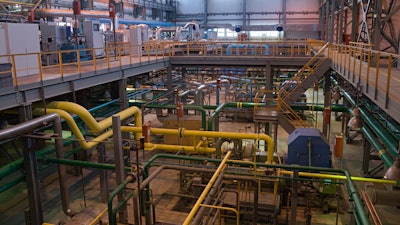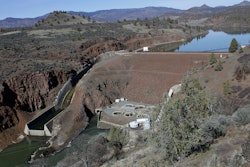
Piping is often the building block of a successful manufacturing plant. Your machinery needs oil, water, and a variety of other fluids to run effectively — and without quality piping, that simply cannot happen. But here’s the thing: not all pipes are created equal. If you want your pipes to suit your needs, you need to start with the right materials. How do you know what kind of piping is right for you? That’s what we’re here to discuss today.
Typical Material Types Available
Most manufacturers will opt for one of the materials listed below for their piping systems. These options are all pretty easy to find, but that certainly doesn’t mean they’re interchangeable. Let’s look at these common piping materials and their unique strengths.
Stainless Steel: Stainless steel is a popular choice because it is highly resistant to rust and corrosion. This is because the steel is made from several different alloys, and these alloys form a protective oxide layer over the steel. If you need pipes for water or oil, this is an excellent choice.
Aluminum: Similar to stainless steel, aluminum will not rust. This makes it a popular choice for liquid piping — especially if you want that liquid to go through the pipes uncontaminated. Aluminum can also withstand exposure to gas and oil, which makes it a great choice for many manufacturers. However, it’s important to keep in mind that aluminum can corrode if used for saltwater or sulfuric materials.
Cast Iron: Cast Iron is a thick and highly-durable material. It can stand up against saltwater, plant growth, and soil, which makes it an attractive material for external piping. However, manufacturers should note that this material does corrode and rust if exposed to water for prolonged periods, so it’s best to use cast iron for short-term projects.
Copper: Copper has one main advantage over other materials — it looks great. Copper is also corrosion-resistant, though it can corrode after long-term exposure to water, salt water, and harsh chemicals.
Galvanized Steel: Like cast iron, galvanized steel is a popular choice for short-term projects — particularly those that involved saltwater. This is because galvanized steel doesn’t rust, so it will not corrupt any water it transports. Galvanized steel does corrode over time from the inside out, so it is best used for short-term projects.
PVC: PVC pipes are most popular for long-term and outdoor applications because of their incredible durability. This lightweight material can stand up to weathering, corrosion, shock, and much more. In fact, PVC pipes can last up to an estimated 100 years! This material is affordable, easy to work with, and long-lasting — no wonder it’s a popular choice among manufacturers. Schedule 80 is a common piping material used in commercial & industrial applications.
Things to Consider
As you can see, each piping material has its own unique benefits. So, how do you decide which material is best for your project? Before you select a material, it’s best to sit down and think about how you plan to use these pipes. Considering the following things will help shape your decision.
Liquid Type. A pipe’s number-one job is to transport materials from one place to another. Therefore, you should consider the materials you’re transporting to determine which piping material you need. For example, if you need piping to transport water regularly for long-term use, you would want to consider using something like aluminum. If you need to transport harsh chemicals or oil, it might be better to try a stainless steel pipe.
Temperature. The next thing you need to consider when choosing piping material is the temperature of the fluids that will be in the pipe. Temperatures can vary wildly in the manufacturing world, from cryogenic material to scaldingly hot temperatures. No matter the liquid’s temperature, you need piping material that can take the heat (or cold). For example, low-carbon stainless steel is ideal for cryogenic temperatures (liquids around -148 degrees Fahrenheit). PVC, on the other hand, can handle temperatures up to 140 degrees Fahrenheit! Choosing a material that can handle the temperatures you need will ensure that your pipes last as long as possible.
If your pipes are going to be outside, you should also consider the outdoor temperature when choosing your material. For example, stainless steel can withstand extreme temperature changes, which makes it a great choice for areas with large variations in the weather.
Pressure. Liquid type and temperature are major contributing factors to your piping needs — but the pressure is just as important. Even if your pipes can handle the temperature of liquids, they won’t be useful at all if they crack under pressure! Most manufacturing facilities require piping that can handle at least 150 pounds per square inch gauge (psig) of pressure.
This is one reason that stainless steel is a desirable choice across many applications. This material is thick and highly durable, which means that it can tolerate highly pressurized fluids for a long period of time. Cast iron is also a great choice, as it can withstand significant pressure both from liquid and from external impact.
Maintenance. Finally, let’s talk about maintenance. It is very important to keep your fluid systems clean and in good working order. However, manufacturing is often a busy and fast-paced environment, and that means you’ll want to choose piping materials that are easy to clean and care for.
Durability is key here; you want your pipes to last as long as possible with only preventative or routine maintenance. Depending on the type of liquid you’re transporting, cast iron, aluminum, copper, or stainless steel are all excellent options for a durable pipe that needs minimal maintenance. Start by determining which material is best for your piping needs, and then select the option that will be easiest to maintain.
Manufacturers can choose from several different materials for their pipes, and each material has its strengths and weaknesses. If you want to have a successful manufacturing plant, you need to choose carefully and select the material that best suits your needs. With careful consideration and regular maintenance, you can have long-lasting and high-quality pipes that help your manufacturing operation succeed.
Mark Ligon is the Marketing Manager for Commercial Industrial Supply, a leading distributor of industrial piping, fittings, valves, and commercial accessories.






















